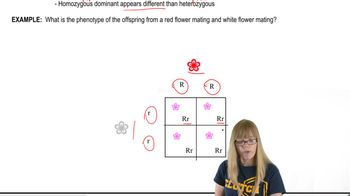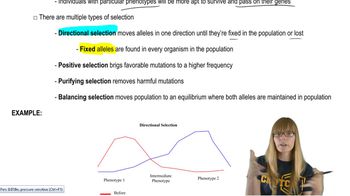Here are the essential concepts you must grasp in order to answer the question correctly.
Autosomal Dominant Inheritance
Autosomal dominant inheritance refers to a pattern where only one copy of a mutated gene from an affected parent can cause the trait to manifest in offspring. This means that individuals with the trait have a 50% chance of passing it on to their children. However, the trait's frequency in a population can be influenced by factors such as fitness and reproductive success.
Recommended video:
Population Genetics
Population genetics studies the distribution and change in frequency of alleles within populations. Factors such as natural selection, genetic drift, and mutation can affect allele frequencies. In the case of brachydactyly, if the trait negatively impacts reproductive success, its frequency may not increase despite being autosomal dominant.
Recommended video:
Fitness and Natural Selection
Fitness in genetics refers to an organism's ability to survive and reproduce in its environment. Natural selection can lead to a decrease in the frequency of traits that are disadvantageous for survival or reproduction. If brachydactyly reduces an individual's fitness, Yule's assumption that it would increase in frequency is flawed, as natural selection would likely counteract this increase.
Recommended video:
 Verified step by step guidance
Verified step by step guidance Verified video answer for a similar problem:
Verified video answer for a similar problem:

